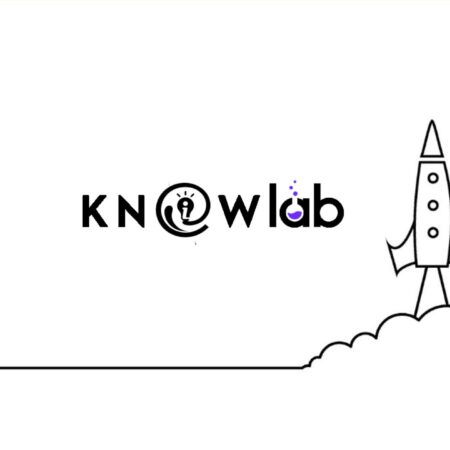 Everyone owns a TV or a smartphone and we all know that they’re becoming the very definition of a smart device. Now the Internet of Things is here to make your car smart as well. Furthermore, it can help you connect all these gadgets. We aren’t talking about years ahead in the future. The future is now!
Everyone owns a TV or a smartphone and we all know that they’re becoming the very definition of a smart device. Now the Internet of Things is here to make your car smart as well. Furthermore, it can help you connect all these gadgets. We aren’t talking about years ahead in the future. The future is now!
Looking way back in 2015 when Gartner predicted that connected cars will form a major element of the IoT, it sounded like fiction. Now the year is 2019 and we have over 25 billion connected devices, that are projected to become 75 billion by 2025. IoT connected cars are now a fact and it seems like they were right.
The Internet of Things brings some fresh air for car manufacturers. It introduces entirely new layers to a car’s traditional concept. The automotive sector is actually able to become an IoT leader, with a wide variety of infotainment services and connected car applications.
The potential opportunities that IoT provides to automotive software developers are unlimited. Connected vehicles are surely becoming a part of the global IoT ecosystem. However, today the automotive industry is on the brink of a revolution. The fast-developing technology and the IoT are the driving force to turning it into the self-driving automobile industry.
IoT in Automotive
In the automotive industry, IoT enables efficiency on a whole new level, as well as capability management. It brings us one step closer to autonomous vehicles. The introduction of 5G is another thing that leaves a field for faster data transfers and response times, as well as enhanced vehicular communication.
Currently, there are two ways automakers connect their vehicles: embedded cars, using built-in antenna and chipset; tethered connections, using hardware to allow drivers to connect to their cars via their smartphones.
App integration is also becoming quite common in today’s vehicles. For instance, Google is working with automotive software development companies to make their apps compatible with cars infotainment systems. This is set to replace built-in GPS systems or even remove the need for radio. Moreover, this computer vision introduces a mobile approach to modern automotive solutions.
Connected Cars
Connected cars are simply ones that are equipped with internet access. In other words, they are a type of IoT devices. The first time we started thinking of connected cars was actually way back in 1996 when General Motors released OnStar. This provided connected communication subscription services and actually saved lives as it allowed GPS tracking and in-vehicle communication.

Predictive Maintenance
Predictive maintenance technology is based on the use of IoT connectivity tools that collect data on the performance, transfer it to the cloud and evaluate any risks of potential malfunctions of a vehicle’s hardware or software. After processing the information, the driver is notified and advised of any necessary service to avoid incidents.
This technology allows the end-user to get the right information in advance. Thanks to IoT connectivity tools the unplanned breakdowns during the ride are becoming a thing of the past.
IoT-Enabled Updates
Modern cars are becoming software and data-centric. That’s why you can hardly overestimate the role of over-the-air updates and data platforms. Imagine having to go to an Apple store every time you need to update your iPhone. Frustrating, isn’t it? The same goes for your new smart vehicle.

Using these data platforms, cars can receive feature and software updates, bug fixes, safety improvement, and traffic updates. The IoT solutions turn even the boldest connectivity ideas into reality.
The mentioned automatic updates will provide drivers with the ability to get flexible map updates, 3D mapping, and some extended driver assistance features.
The global adoption of the NDS (Navigation Data Standard) for IoT-enabled automotive navigation forced equipment manufacturers and automotive vendors to reconsider the formats they use. Many of them had to redesign map production pipelines and provide over-the-air updated for users to install new maps remotely.
In-Car Wi-Fi
This has been a dream to thousands of drivers for a while now. Now, it’s finally a reality. Many IoT features are supported by devices using 3G, 4G or 5G connectivity. However, Wi-Fi availability makes IoT accessible to millions of drivers. IoT devices can serve as Wi-Fi points themselves. They can connect to smart infrastructure facilities and receive real-time data on road conditions.
Connected cars are becoming a mobile hotspot for passengers via SIM cards. Manufacturers are launching infotainment systems with platforms for Wi-Fi local area networks so passengers can wirelessly connect to the Internet on their devices during the trip.
Smart Infrastructure
Innovative automotive technologies, like autonomous driving, can’t without machine-reliable infrastructure. This is set to revolutionize car design in the most radical way. Soon street markers and signs will be a part of the smart urban landscape by being equipped with radio beacons.

We’ve all watched at least one futuristic science fiction film, right? The IoT connectivity will make our cities look that way in no time.
Receiving real-time data from smart infrastructures, platforms can arise from road conditions, weather, characteristics of the road surface and unusual vehicle behavior. Eventually, all of this data and recommendations are transmitted to all cars connected via IoT devices.
Final Thoughts
IoT has a game-changing impact on automotive software development. IoT-based solutions will end our struggles with malfunctions and stops while driving, with the help of predictive maintenance technologies.
IoT allows millions of drivers to connect to over-the-air software and data platforms. Furthermore, you’ll be able to connect to road infrastructure through Wi-Fi. All these advantages will make your driving experience smooth and safe. IoT entered the automotive industry to provide you with all the extra tasks you want your car to be able to perform while providing improved safety.
Author: Sophie Zoria. Editor at Swag Soft.





